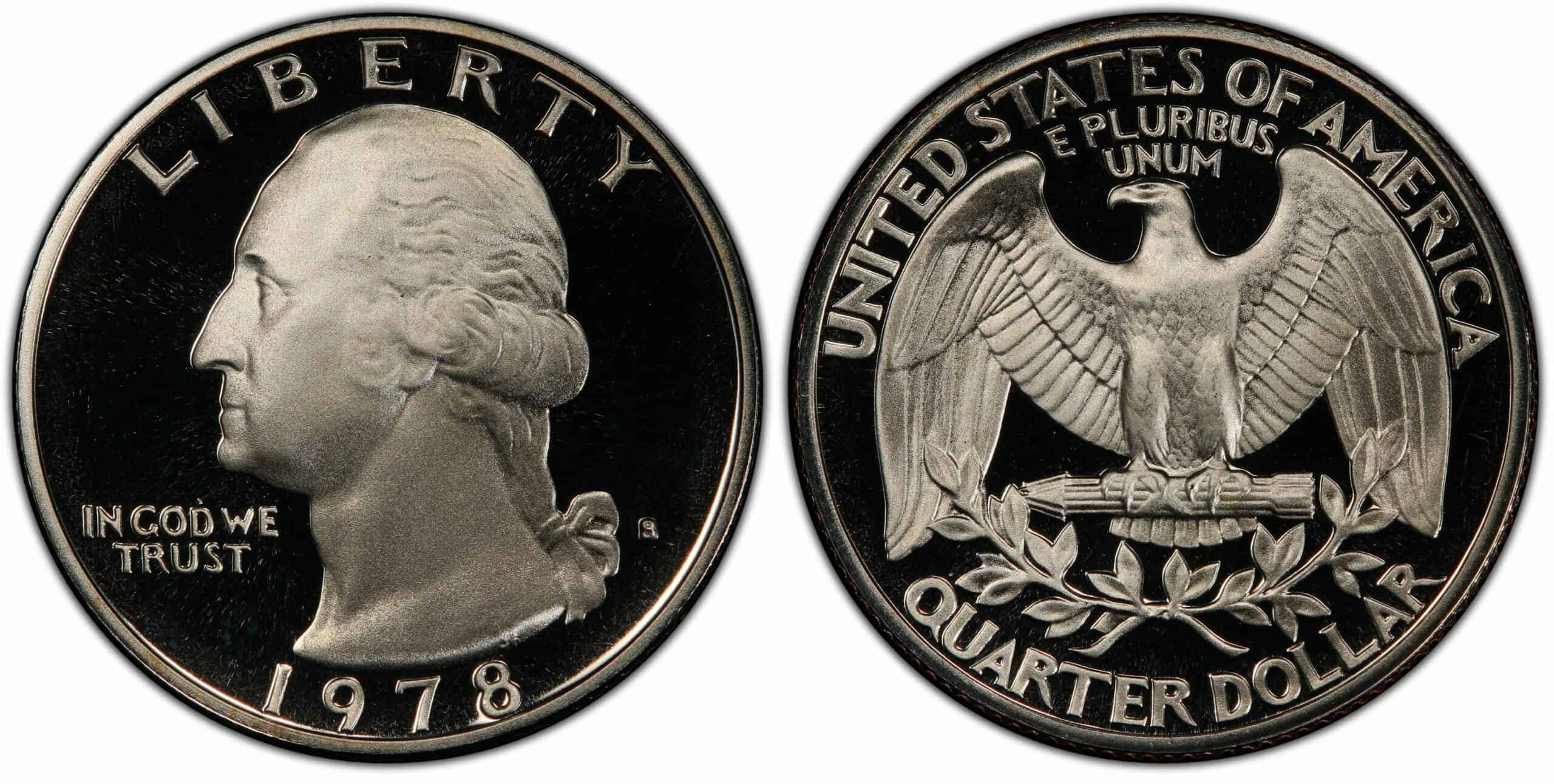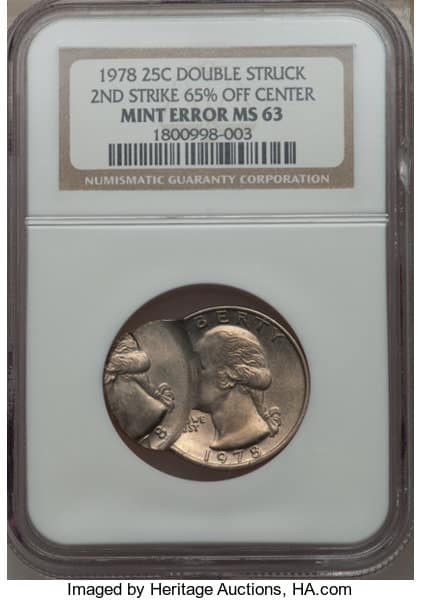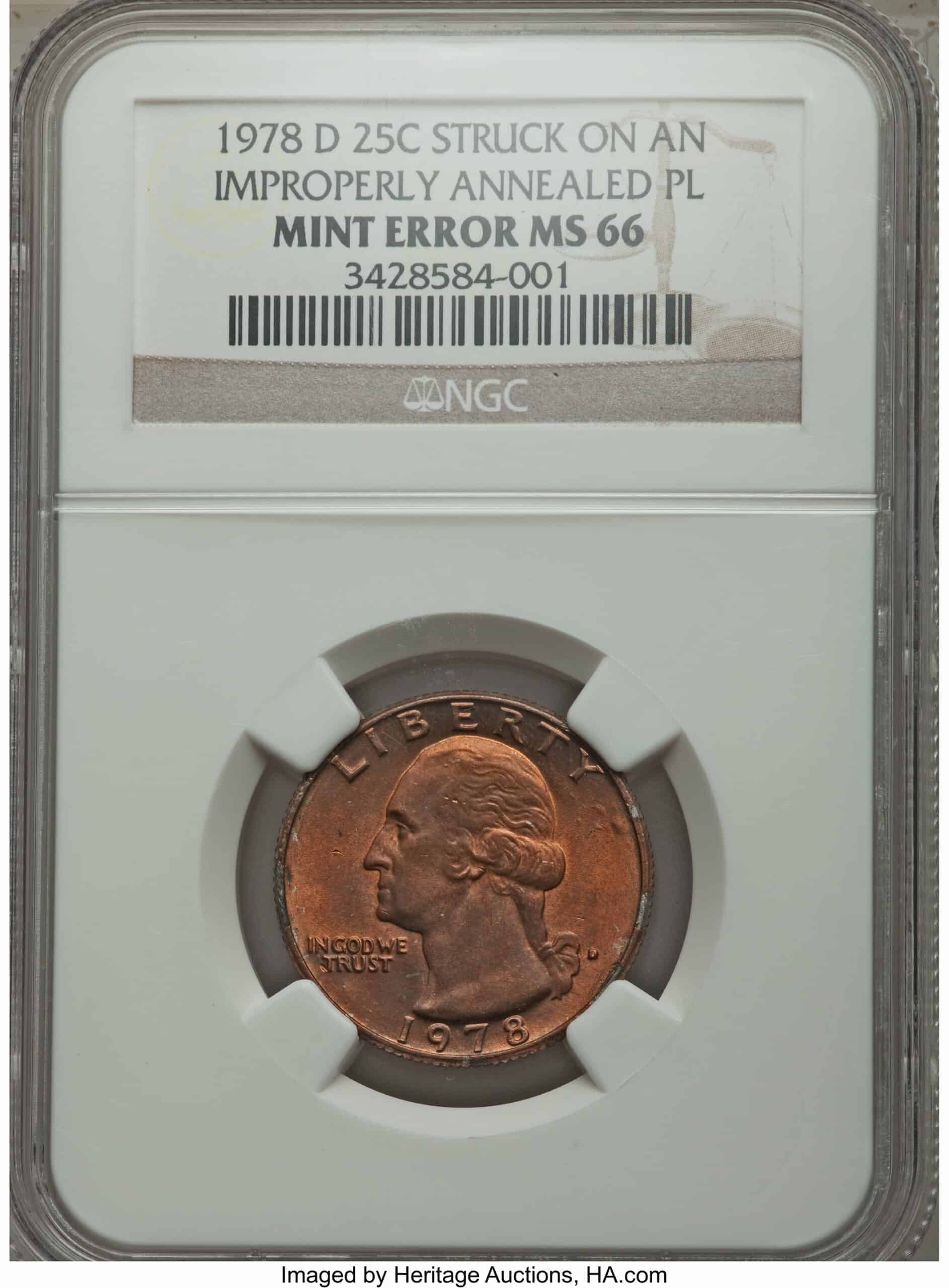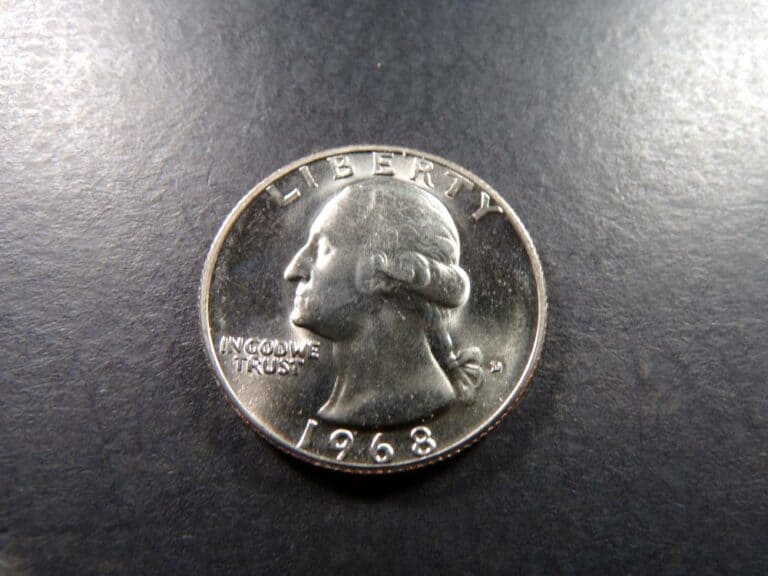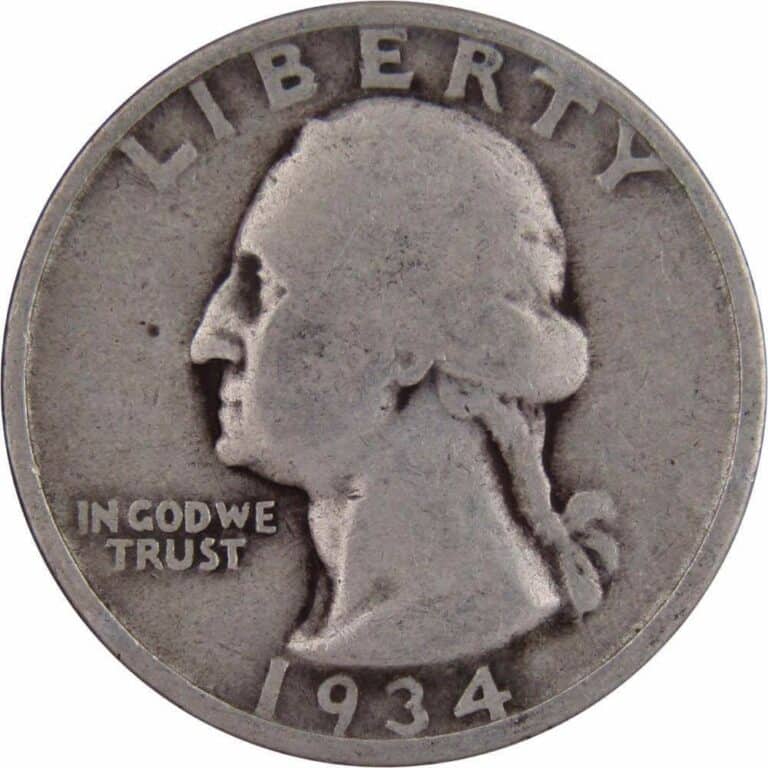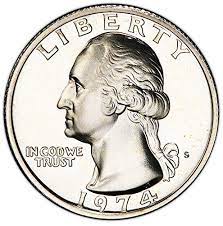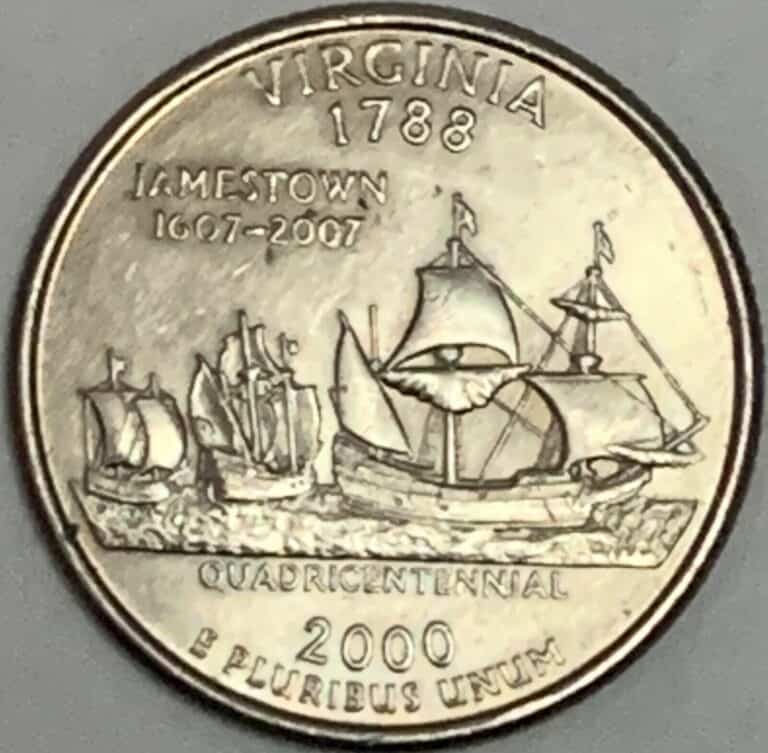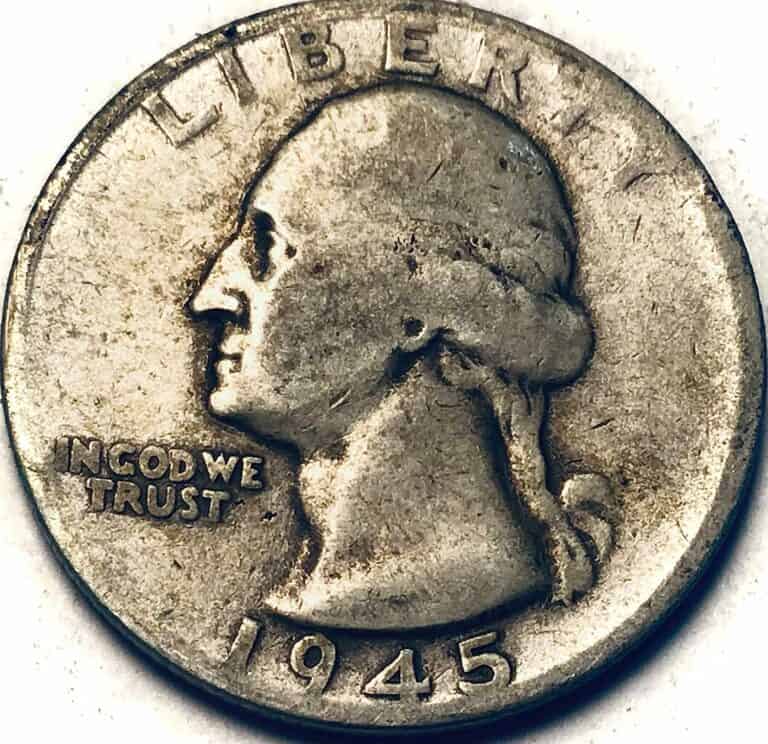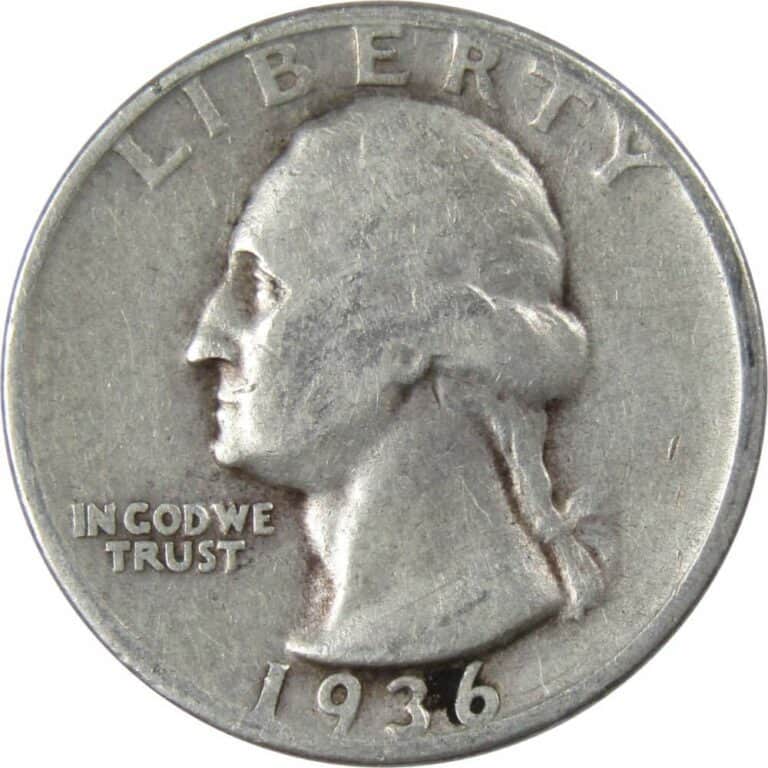1978 Quarter Value: How Much Is It Worth Today?
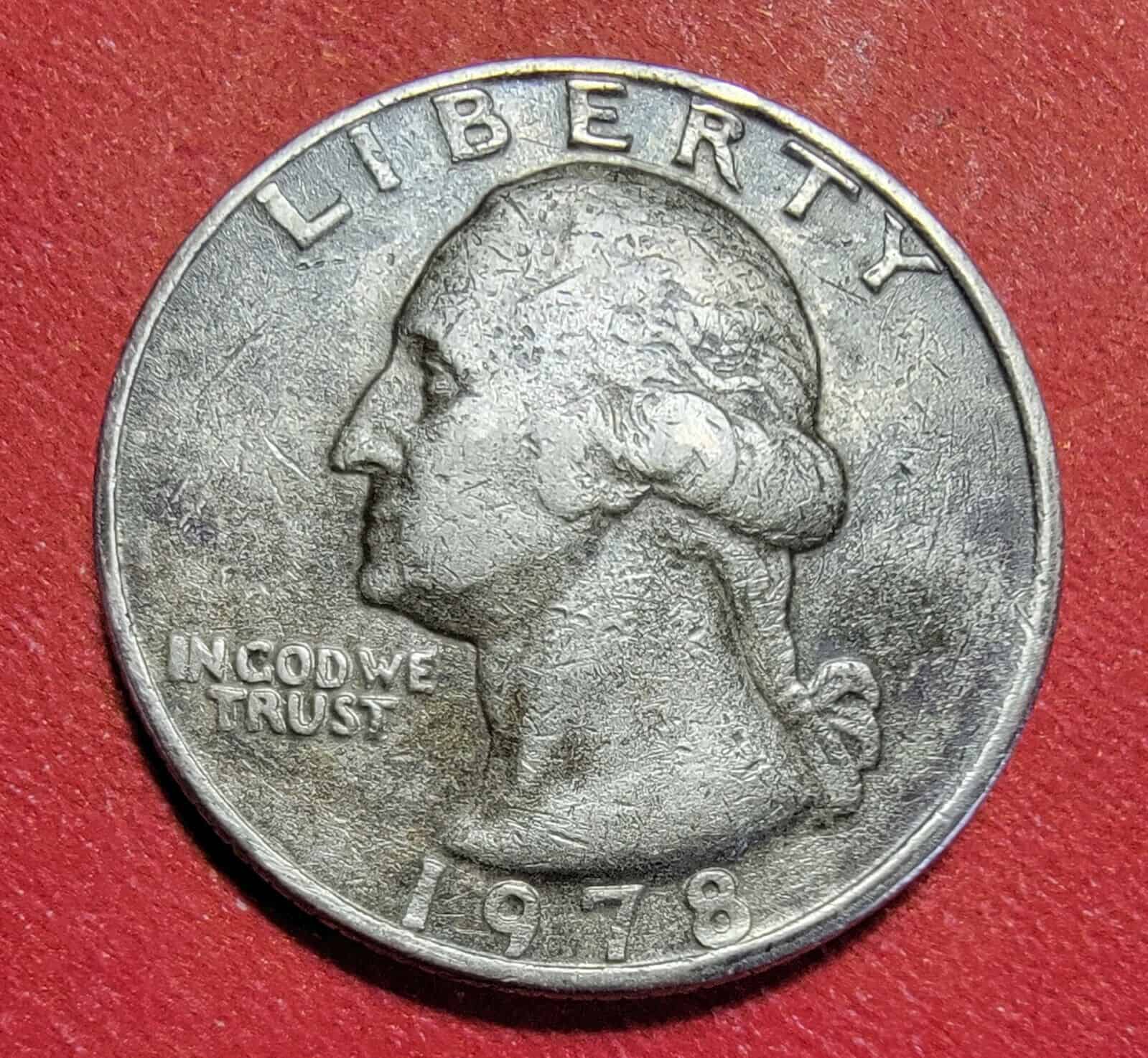
Ever discovered a 1978 quarter jingling in your pocket change? You might wonder what it’s worth, and the answer may astonish you! This coin was struck over four decades ago and has evolved into a highly sought-after collectible.
In this article, we’ll delve into the captivating background and characteristics of the 1978 quarter and discuss the coin’s worth in varying states of preservation. How fortunate for you to stumble upon this guide!
So, are you still really eager to learn more about the value of this vintage quarter? Well, then continue reading, and together we’ll examine this intriguing piece of history!
1978 Quarter Value Chart
| Mint Mark | Good | Fine | Extremely Fine | Uncirculated |
| 1978 No Mint Mark Quarter Value | $0.25 | $0.25 | $0.5 | $6.65 |
| 1978 D Quarter Value | $0.25 | $0.25 | $0.5 | $6.65 |
| 1978 S Quarter Value (Proof) | NA | NA | NA | $4.52 |
There are a few things that you need to note about this quarter coin (other than the year of mintage because that much is obvious!).
The quarter’s obverse side features none other than George Washington, while the reverse depicts an eagle clutching arrows and an olive branch. We’ll dive deeper into the design later, but let’s touch on its fascinating history for now. Lady Liberty used to grace the front of the quarter, but George Washington took her place in 1932, commemorating his 200th birthday. John Flanagan designed the portrait, honoring the nation’s first president.
Made of a copper-nickel clad composition, the 1978 Washington quarter consists of 91.67% copper and 8.33% nickel, with a copper core encased in nickel. Before 1965, the coin featured 90% silver and 10% copper. The quarter measures 24.3 mm in diameter, weighs 5.67 grams, and boasts a reeded edge.
1978 No Mint Mark Quarter Value
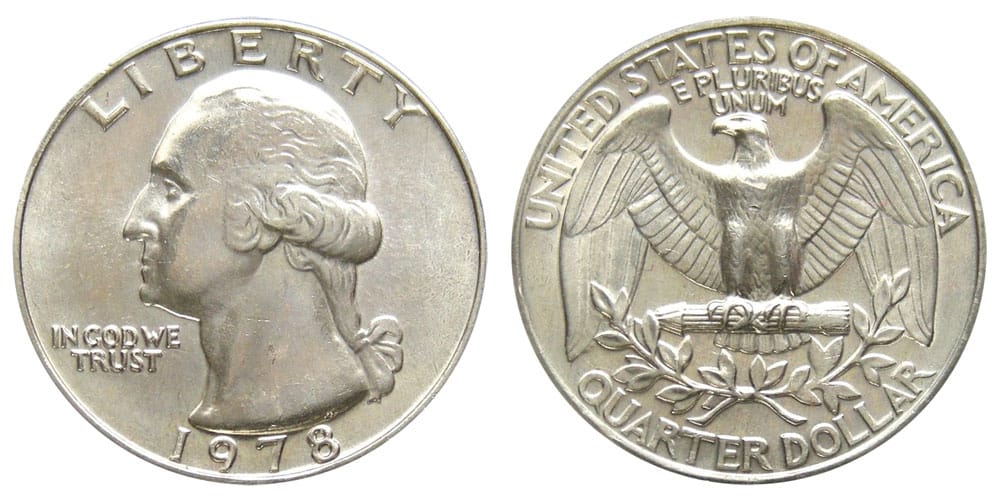
If you’ve stumbled upon a 1978 quarter without a mint mark, you should know that it’s coming from the US Mint in Philadelphia, Pennsylvania. The value of these coins, be they in good or fine condition, will likely remain at their face value – a mere 25 cents. However, if you possess a 1978 quarter in exceptionally fine shape, it could fetch around 50 cents. An uncirculated coin could be worth up to $6.65, so that’s where the real value lies.
While it may seem like $6.65 is the most you’ll get for a mint-condition 1978 quarter without a mint mark, there was a recent instance of a perfectly preserved one selling for a jaw-dropping $2,233 at auction! So, as they say, you never really know what might happen. Keep the conversation light and engaging, and remember that sometimes, the unexpected can occur.
1978 D Quarter Value
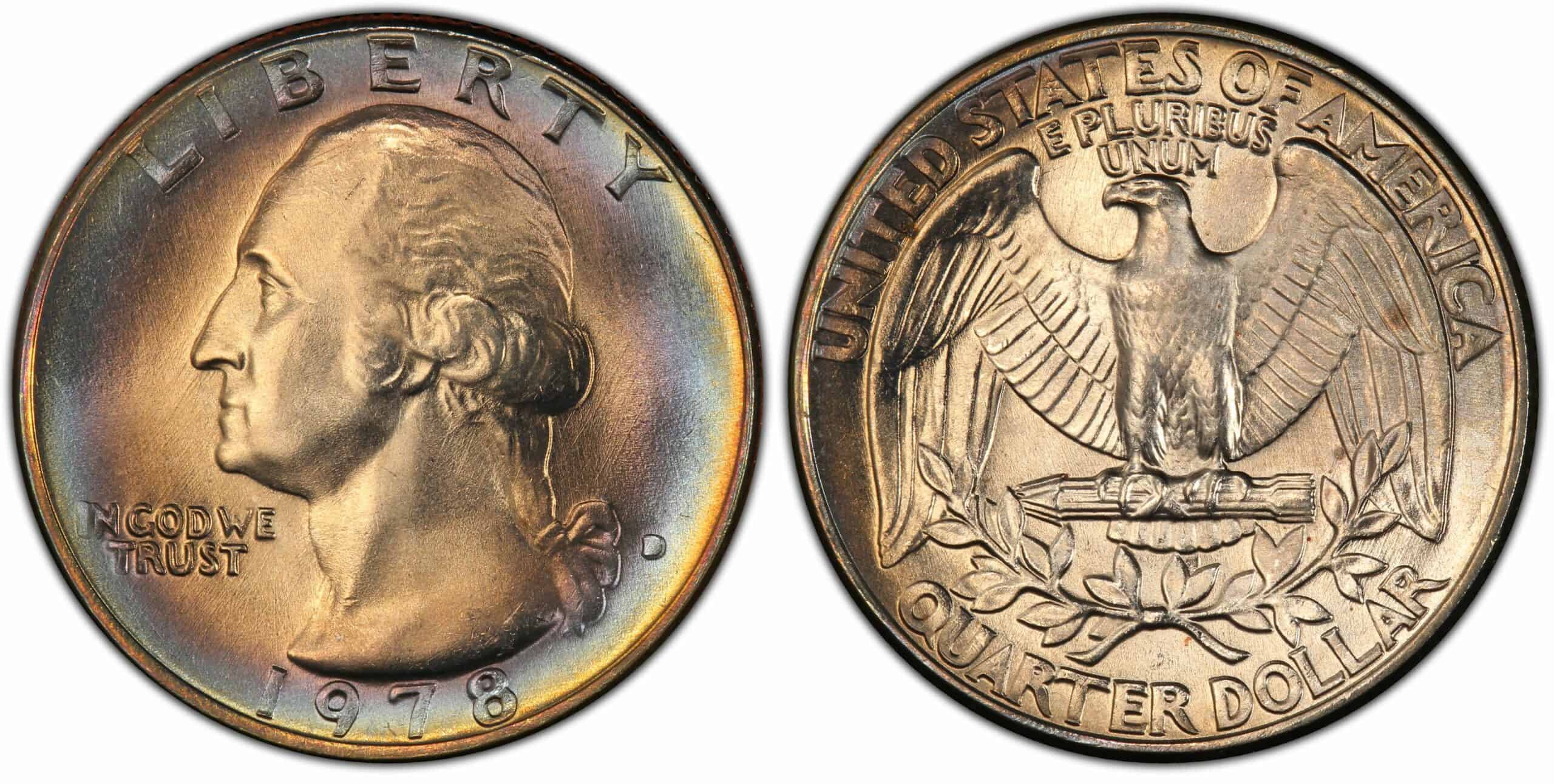
Back in 1978, the Denver Mint (in Colorado) also minted this coin with a total mintage of about 287,373,152. You see, this little coin has a fascinating story of its own. Just like its sibling, the no-mint mark 1978 quarter, if found in good or fine condition, it’s worth roughly face value (25 cents). But wait, there’s more!
Should you stumble upon a 1978 D quarter in extremely fine condition, you might just be holding a shiny 50-cent piece. However, the real star of the show is the uncirculated condition, which catapults its value to a whopping $6.65, just like its no-mint quarter counterpart.
And guess what? The same goes for the Philadelphia minted quarter, where $6.65 is usually the max you could get for it. But here’s where it all get’s really interesting from time to time, a decade ago, an absolutely perfect mint condition 1978 D quarter appeared and was sold at an auction for an astounding $1,528! Talk about a treasure hunt, huh?
1978 S Quarter Value (Proof)
The estimated mintage of this proof version of 1978 quarter coins by the San Francisco mint was 3,127,000. This particular quarter is no ordinary coin, it’s a Proof quarter! With its mirror-like surface, the Proof coin is a work of art that collectors simply find hard to resist.
Now, these 1978 S quarters are quite famous among collectors, as their value varies widely based on their condition. However, if you manage to find a pristine 1978 S quarter, which is a proof quarter, you could be looking at a cool $4.52 in your pocket!
So, if you’re into collecting or simply fascinated by coins, keep an eye out for these San Francisco-minted gems – you never know what treasures you might uncover!
1978 Quarter Grading
Grading a 1978 quarter is essential for determining its value and authenticity. To accurately grade these coins, collectors, and dealers assess the coin’s overall condition and appearance. Several factors come into play, such as wear, luster, color, and the presence of any errors or unique features.
A coin’s grade can range from Poor (barely recognizable) to Mint State (uncirculated) and everything in between. In general, higher-grade coins will fetch higher prices in the collector’s market. Professional grading services like PCGS and NGC can provide a reliable and consistent assessment for your 1978 quarter, ensuring that you have a clear understanding of its true worth.
Keep in mind that a well-preserved, error-free 1978 quarter could be a valuable addition to your collection or even a smart investment. So, before you let that coin slip through your fingers, make sure to have it graded!
If you’re interested in learning more regarding the grading of 1978 quarter coins, then this video may be of some help:
1978 Quarter Error Lists
While a 1978 quarter typically holds a face value of 25 cents, it’s worth noting that certain errors or varieties can make them far more valuable to collectors.
Here’s an interesting video that talks more about these error coins.
If you’re lucky enough to have one of these rare coins in your collection, you might be pleasantly surprised by the return on your investment! So, let’s dive into a few of the most frequently observed 1978 quarter errors that have made their way into the public’s hands and sold to eager collectors.
1. 1978 Quarter Strike off-Center Double Struck
This is the double struck that has a second strike-off center error. It is quite a fascinating and incredibly rare error that piques the interest of coin collectors. Unlike the previously mentioned double strike error, in this case, the second strike was significantly off center. As a result, the quarter had an unusual appearance, with a portion of its image sticking out of the main design. Instead of a perfect circle, this peculiar quarter looked more like a sideways “8.” This particular error coin caught the attention of collectors and managed to fetch a price of over $293!
2. 1978 Quarter Rotated Double Struck
A rare and intriguing error that can occur in 1978 quarters is the double struck and rotated quarter. What happened with this coin is that it was struck twice, and during the second strike, it rotated a bit. This led to the images doubling and overlapping each other, making them partially visible to the naked eye. Believe it or not, a coin showcasing this unique error was recently auctioned off for around $172.50!
3. 1978 Quarter Off-Center
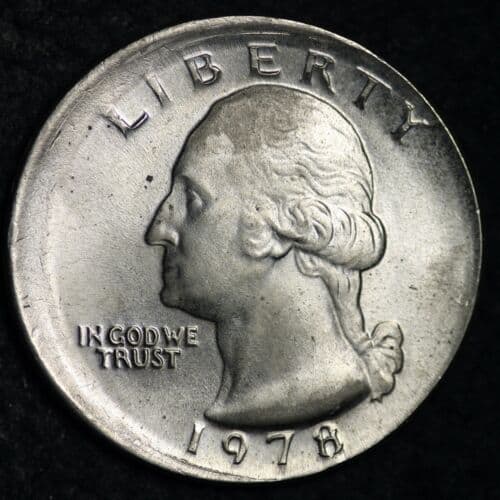
It is yet another interesting error that happens when the coin isn’t accurately centered on the planchet, which is the blank metal round used to make coins. This misalignment results in a quarter with a partially missing and off-centered design. Although these rare gems aren’t found too often, they do exist, and their value typically increases the more off-center the design is. Generally, these coins can be worth tens of dollars, depending on their condition. For instance, a 1978 quarter that was off-center by 10% recently went under the hammer and fetched a solid $56 at auction!
4. 1978 Quarter Five Cent Error
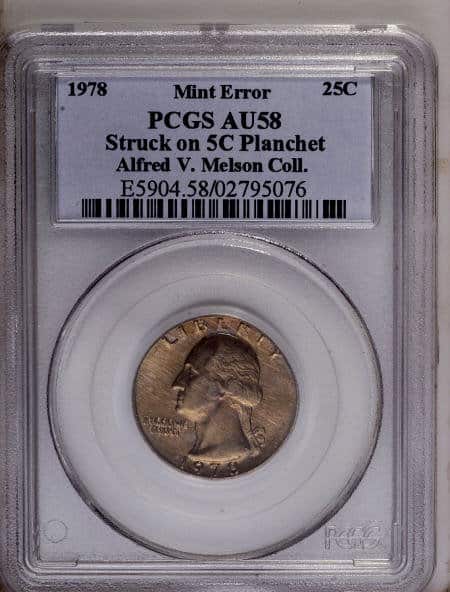
One remarkable error you might come across is the 1978 Quarter Struck on a Five Cent Planchet Error. This rarity occurs when a quarter is mistakenly made using a smaller five-cent planchet, which is normally reserved for a dime. As a result, part of the quarter’s image is trimmed away around the edges, and the coin ends up weighing just 5 grams instead of the standard 5.67 grams. A 1978 quarter with this peculiar error recently sold at auction for around $138 – not bad for a mere 25-cent piece! Another intriguing discovery was a quarter struck on a one-cent planchet. This unique penny-sized red quarter captured collectors’ attention and sold at auction for over $600!
5. 1978 Quarter Planchet Improper Annealed
This type of error usually occurs when a planchet isn’t correctly heated and cooled during the minting process, resulting in an improperly annealed coin. This rare minting error doesn’t happen very often, but when it does occur with a copper and nickel quarter, the copper can start to reveal its reddish-orange hue. The worth of these error coins depends on their condition and variety. Though it’s a scarce find, a 1978 quarter displaying this error did pop up recently. It managed to catch collectors’ attention and sold at auction for a cool $99.
In conclusion, the 1978 quarter error coins offer a fascinating glimpse into the world of numismatics. These unique and rare coins are of great interest to collectors, with their unusual features and sometimes surprising values. While finding these error coins can be a challenge, the thrill of discovery and the potential for significant returns make the hunt all the more exciting. So, keep an eye out for these extraordinary 1978 quarters, as they’re truly little pieces of history with a story to tell.
1978 Quarter FAQ
1. Is a 1978 Quarter coin worth anything at all?
If you look at the NGC price guide (by March 2023), the value of a circulated 1978 Washington Quarter ranges between $0.30 and $0.85. Yet, the open market tells a different story for those in impeccable, uncirculated condition. Pristine 1978 D Quarters have been known to fetch as much as a whopping $250! The stark difference in values highlights the significance of a coin’s condition and scarcity, which adds to the excitement and overall attraction of this coin for the collector communities.
2. Is a general 1978 Quarter coin rare at all?
In 1978, the last year of Eisenhower dollar production, a significant number of coins were minted. The Philadelphia mint created close to 26 million coins for circulation, and the Denver mint produced more than 33 million. As a result, circulated specimens are not considered rare or particularly valuable nowadays. While 1978 quarters aren’t generally considered rare, certain unique varieties and error coins can significantly increase their value, such as the examples previously discussed in this article.
3. How much is a 1978 quarter with dot worth?
The estimated value of a 1978-D Washington Quarter, according to the USA Coin Book, stands at $6.81 or higher if it’s in uncirculated (MS+) mint condition. Additionally, the melt value listed below indicates the worth of the metal in the coin itself, representing the coin’s base value.
4. What is rare about 1978 quarters?
A rare and intriguing error that may be discovered in a 1978 quarter is the double struck and rotated variety. In this unusual occurrence, the coin was struck not once but twice, and during the second strike, it experienced a slight rotation. This rotation led to the coin’s images being duplicated, with the designs partially visible as they overlap each other. This unique error, fascinating to the human eye, showcases the intricate nature of coin minting and the potential for captivating mistakes that can pique the interest of collectors and enthusiasts alike, making these coins a sought-after find.
5. What is the mint mark on 1978 quarter coins?
Well, as we mentioned earlier the 1978 quarter coins exist in Philadelphia mintage (without any mint marks), Denver mintage (with a mint mark of “D”), and the San Francisco mintage (with a mint mark of “S”) but San Francisco mint was the one that produced only the proof version of this coin series.
